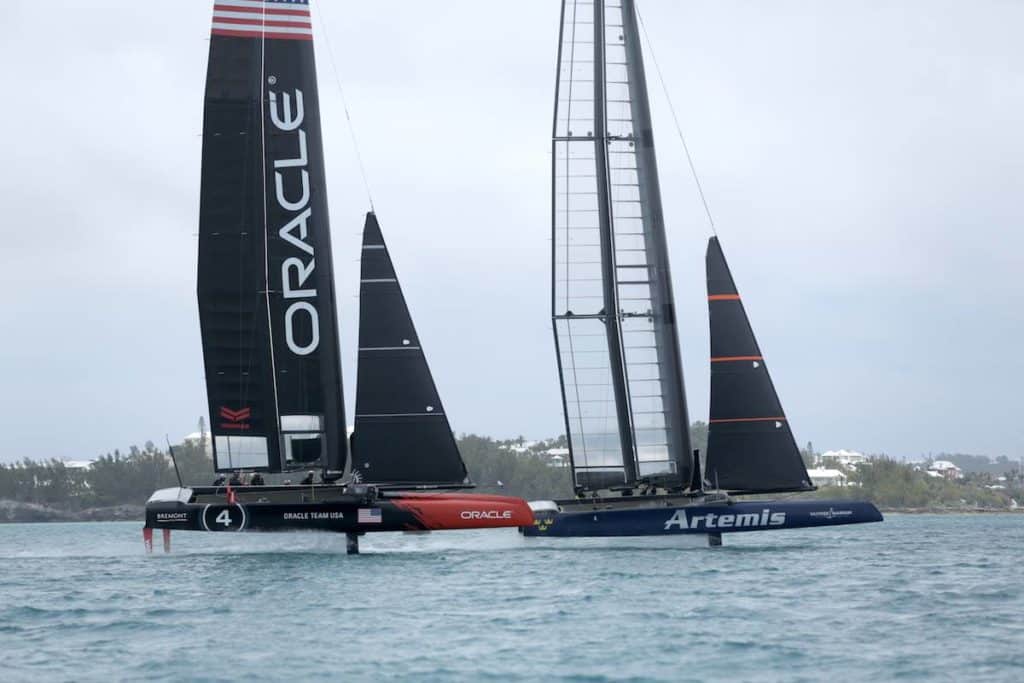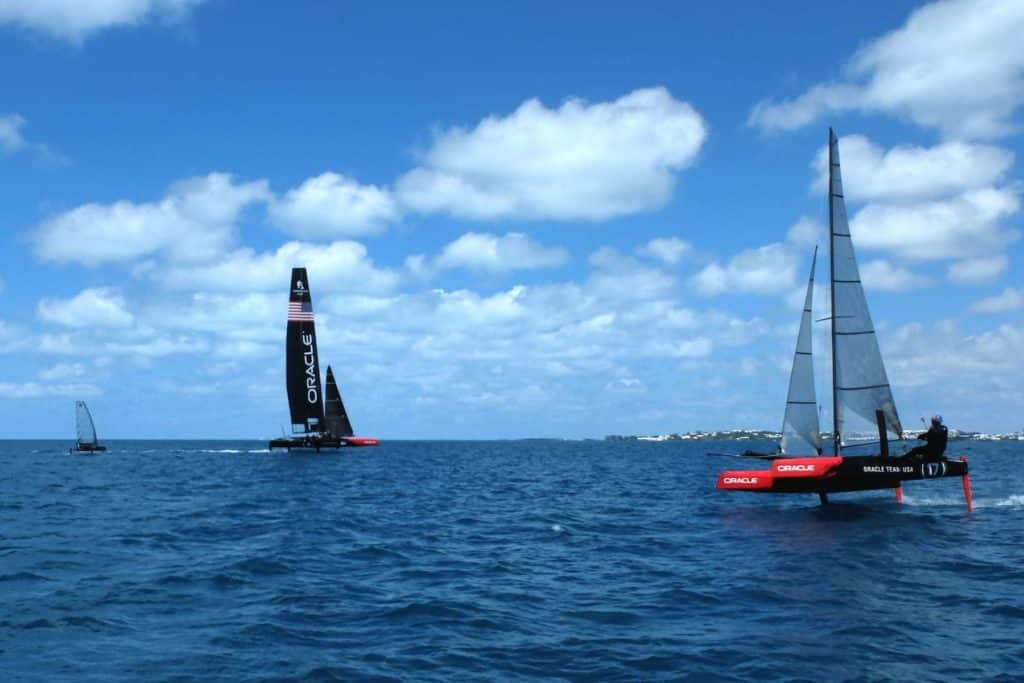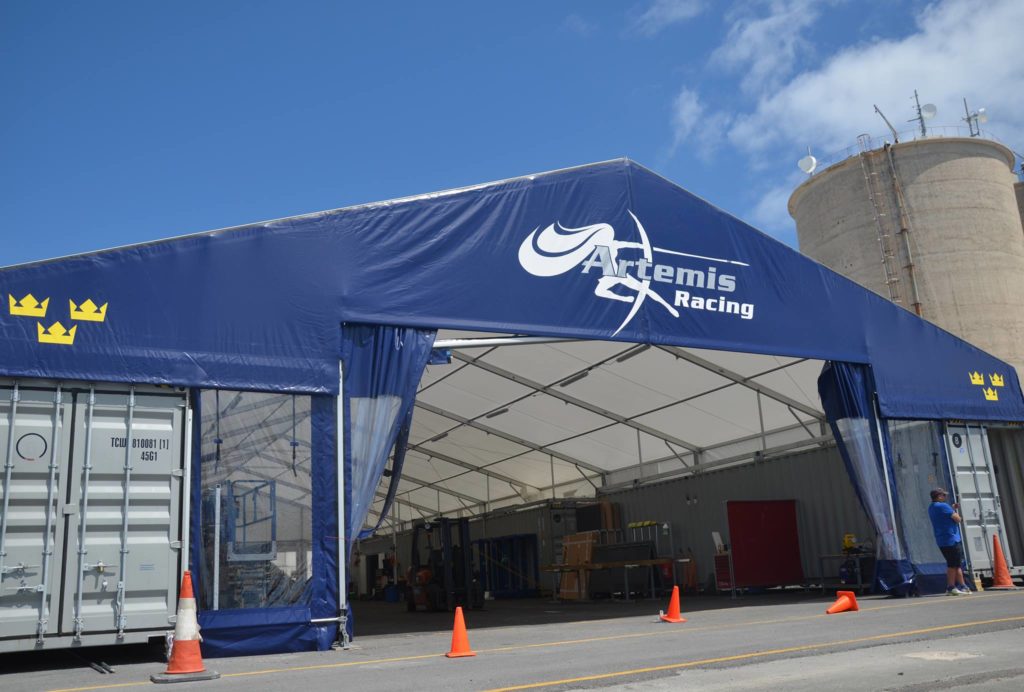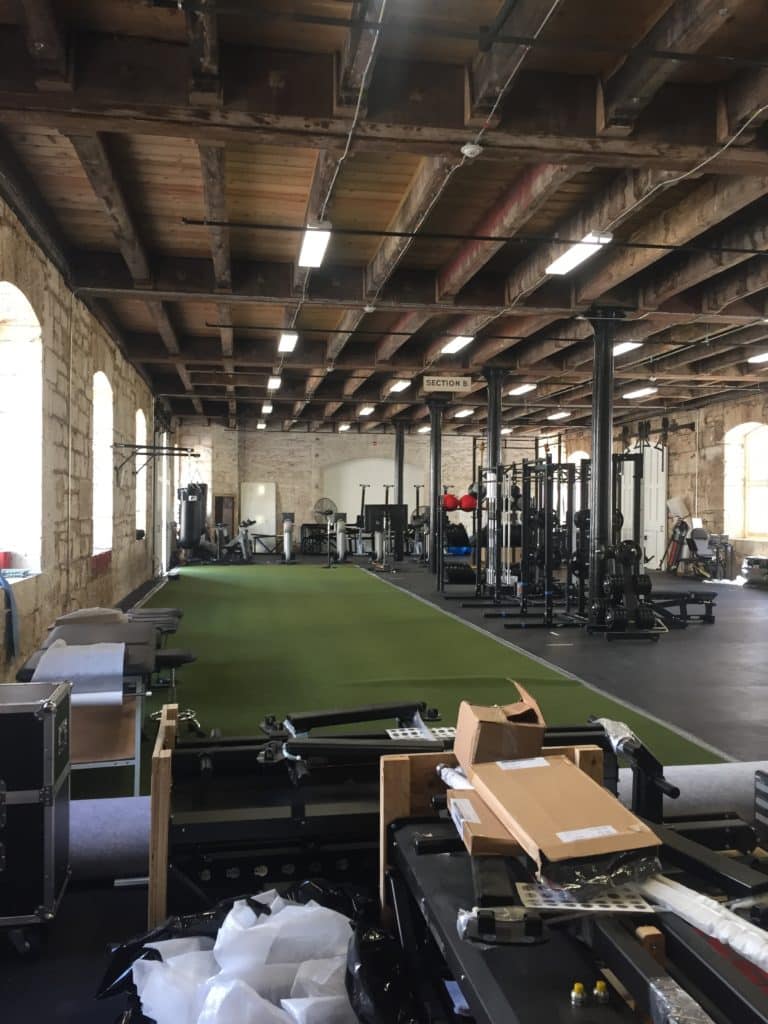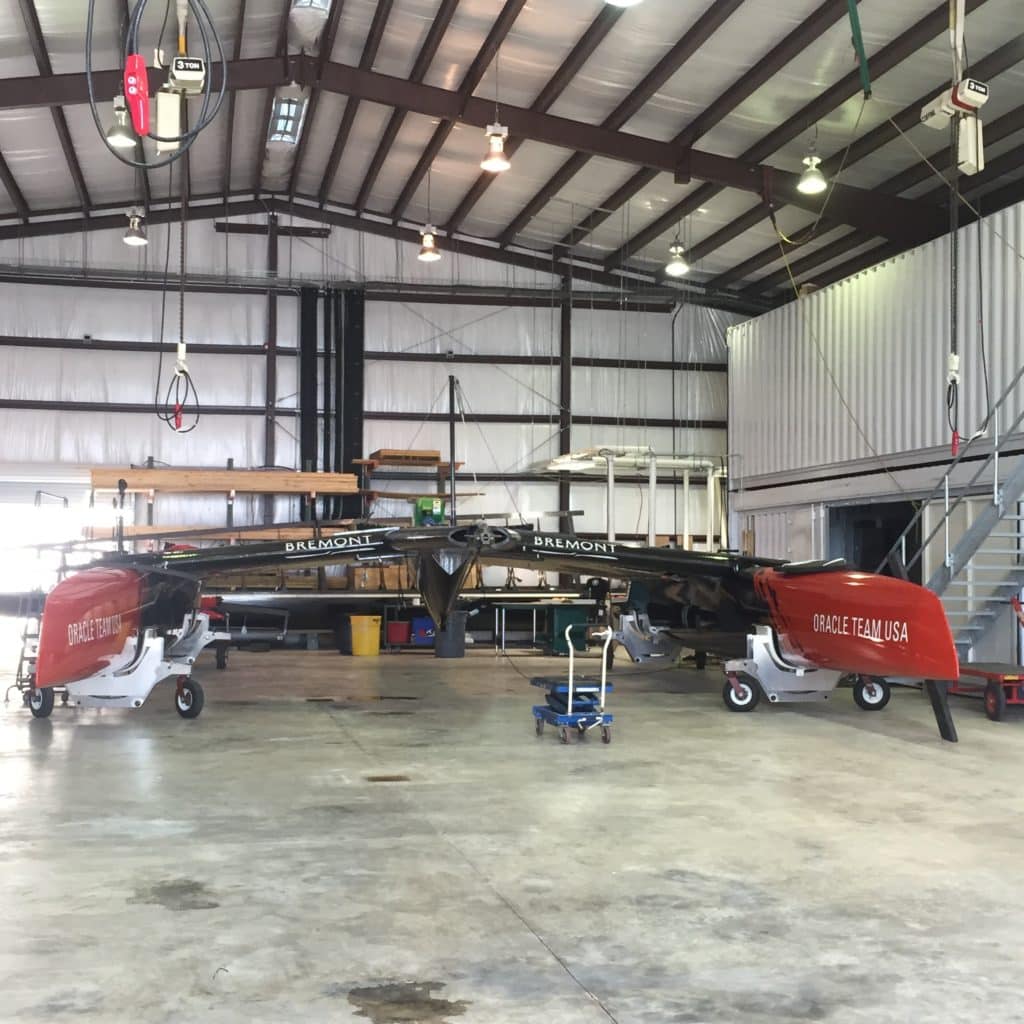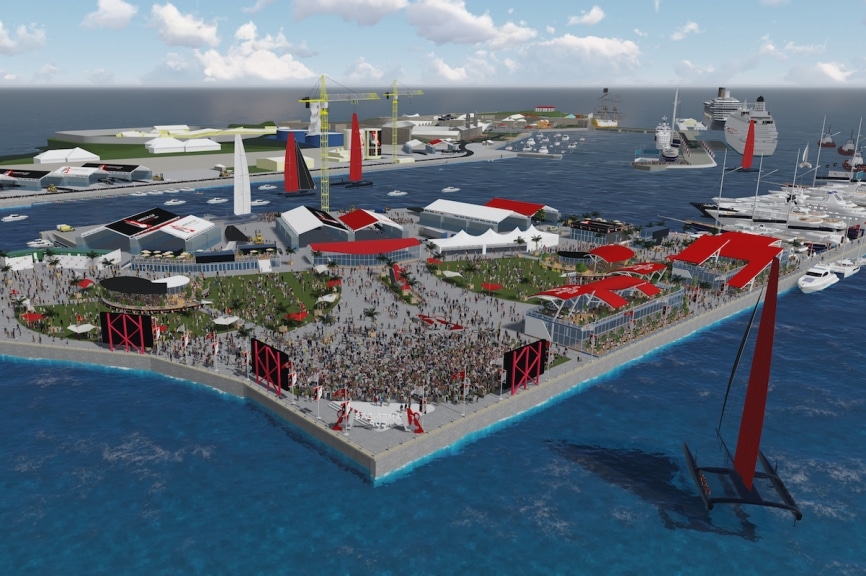The Dockyards in Bermuda are buzzing with the usual sights and sounds of a busy boatyard—cranes and forklifts whiz past, men wearing paint masks and sunhats tinker with boats. The whirr of an air compressor punctuates the calls of seagulls. Except, this isn’t your everyday boatyard. Celebrity sailors are milling about—Tom Slingsby wanders into the canteen to grab a bite, while Iain Percy dons a hard hat to chat with some ground crew. This is the home of what will be the 35th America’s Cup, come June 2017.
Originally the base of the British Royal Navy in the Western Atlantic and rebuilt into a tourist destination the 1980s, the Royal Navy Dockyards are unintentionally also a suitable venue for the 35th America’s Cup. Bermuda is not known for vast tracts of available space, save for the industrial areas surrounding the Dockyards where the challengers—and Oracle Team USA—are putting down roots. With plans to fill in the nearby basin to create a platform for the village, the transformation is underway. In the shadow of cruise ships, teams are preparing.
“The base is still coming along,” says Slingsby, Oracle’s tactician/helmsman. “We’re well set up here, with our offices, gym, and our boatbuilding and wing sheds.” Touring the base, it’s evident the two teams with the largest presence—Artemis and Oracle—are making the most of the space they have. That includes using each other for high-intensity practices.
“Artemis has been beating us more than we’re beating them,” says Slingsby. “As frustrating as it is for our sailors, it’s great for the overall program. You learn more when you lose than when you win. It’s tough for our egos, but it’s good for the long term.”
The teams have been practicing side-by-side on the Great Sound in modified AC45s—the 45 Sport for Oracle and the 45 Turbo for Artemis. “It’s funny how you don’t really talk too much between the teams but end up with similar packages in the end,” says Artemis helmsman Nathan Outteridge. “We’ve got two boats that go roughly the same speed, on the America’s Cup racecourse, two full years out. We were going upwind and down with no more than ten seconds difference all the way around. Not only are we doing race practice, but also it’s great for the designers to see what’s working and what could be modified.”
And modify they do. In two massive sheds, no more than 20 yards apart and emblazoned with their respective teams’ logos, the engineers and designers are hard at work. Due to the sensitivity of the development projects, no photos are allowed, but suffice it to say the focus is almost entirely on the wings and foils.
“This America’s Cup is not going to be won by spending money to improve the shape of the hull that’s only going to be in the water for a few seconds when you tack,” says Peter Rusch, communications director for Oracle Team USA and ACEA. “The physical output on these boats is going to be massive. The efficiency of that system, and the efficiency of how you get the power you’ve generated translated through what you need to control—the boards or the wings—is where the races are going to be won and lost.”
As has always been the spirit of the America’s Cup, the race to innovate is on. While the World Series teams are away in Portsmouth sailing their AC45Fs, most members of the design teams will remain behind in Bermuda, continuing their work with the modified 45s and the development of the AC48.
“It’s natural down time, so that’s when you catch up,” says Adam May, the Design Coordinator for Artemis Racing. “Whenever the boats are out of the water, they can’t be sailed. We try to limit that time as much as possible.”
It’s not just about the AC45s and 48s in Bermuda, either. On any day the “big boats” aren’t out sailing, Outteridge says Moths and Foiling Phantoms are the platforms of choice.
“The same principles apply when it comes to the relationship of the foils with the water and the boats,” says Outteridge. “You can test different tactics and strategies and crash, and it doesn’t matter. You can get the guys, who don’t drive or trim, out sailing and they can learn the sensations of foiling and jibing. Then, if they feel uneasy on the big boat, they already know what’s going to happen through trial and error on the smaller boats.”
With a garage full of Moths and a parking lined with Phantoms, (with “a whole additional container of boats coming soon,” according to Slingsby) the Dockyards has turned into a playground for these sailors. Unanimous across the board, from Oracle to Artemis, designer to sailor, is their appreciation for the venue. “In San Francisco, we had the same breeze every day, which can get a bit stale,” says Slingsby. “Here, we have to learn in light wind, heavy wind, shifty wind—and it’s a good challenge for the sailors. We have to master all of the conditions. It’s the way it should be.”
